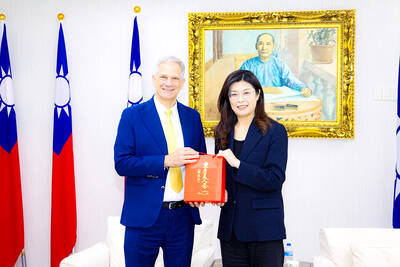These days, cooking shows are everywhere. From over-eating food challenge-seekers to grumpy gourmet chefs, it’s hard to turn on the TV and not find a cooking show. But Graci in the Kitchen, on online cooking show based in Taipei and hosted by Graci Kim, makes meals not just based on ingredients, but on the mood of the consumer.
Graci in the Kitchen (GITK) started in January 2012 as a food blog. Kim, a Korean-born New Zealander, or “Kowi” as she likes to say, had been living in Wellington for her job at the Ministry of Foreign Affairs and Trade and missed the cooking her family used to do at home.
“Cooking is in our blood, I think,” said Kim, whose father owns a Japanese Restaurant in Auckland and has many other culinary-inclined relatives as well. After moving to Taipei on a two year ministry posting for full-time Chinese-language study, Kim decided to move from writing to filming and try her hand at producing her own TV series. With the help of a few good friends, she developed what is now known as GITK.

Photo Courtesy of Graci in the Kitchen
“It was just a good bunch of friends that were learning just as I was learning, so it was fun but a bit of a stumble as we were going,” Kim says.
The first season garnered nearly 800,000 viewers — no small feat for Kim and her crew’s first foray into filming.
GRACI OUT OF THE KITCHEN
After nearly a year hiatus, Kim decided that it was time to begin another season of GITK. After enlisting the help of fellow Kiwi, Verity Mackintosh, a TV producer currently based in Beijing, the show saw some major changes. A Singapore-based film crew with over twenty-five years of experience was employed alongside local support staff based in Taipei. The length of each episode was cut from twelve minutes down to five, but the biggest change to the show was the addition of locations.
“I figure I’m in Taipei, so why not show everybody the inspiration that Taipei gives me to do what I do,” Kim says.
Filming for season two kicked off in early September at the end of Kim’s summer vacation from language study. New episodes follow Kim out of the kitchen as she goes shrimping in Shilin, wanders through Raohe night market and visits a traditional tea house.
FOOD TO SUIT YOUR MOOD
For Kim, food is not just about pleasing the palate or filling the stomach.
“I want to inspire people to think about food in a slightly different way. We think about food just as something that feeds our bodies, that tastes good, kind of on a primitive level. I’d like to get people enthusiastic about the fact that food can be a lot more than that, it can be food for the mind,” she says.
Along with feeding her viewer’s minds, Kim likes to make foods to suit their moods as well. Her mood-based cooking ideas came about from her realization that food is connected to our emotions and memories.
“Some foods make you think of home, others make you think of certain holidays. Food is not just something that nourishes the bod; it nourishes the mind, body and soul,” she says.
Kim satisfies all of these elements by using quotes to get her viewers thinking, and then basing the entire meal on a mood. Kim’s themes cover everything from feeling ugly to feeling blessed, and there’s always a meal to compliment or correct any emotion.
Kim’s work as a diplomat has also influenced the direction of GITK.
“It gives me the opportunity to be in new places and meet a variety of new people that I might not otherwise,” says Kim, adding, “Right now I’m in Taipei, but this job will always lead me to new locations where I can discover more about new food and places.”
In 2014, Kim will head to Beijing to begin a posting at the New Zealand Embassy where she will work to further the economic relationship between New Zealand and China.
Whether you’re feeling beautiful, ugly, happy or sad, Graci in the Kitchen has a meal to suit your mood. Season two begins tomorrow and is available for viewing along with season one at www.graciinthekitchen.com and Koldkast TV.

Seven hundred job applications. One interview. Marco Mascaro arrived in Taiwan last year with a PhD in engineering physics and years of experience at a European research center. He thought his Gold Card would guarantee him a foothold in Taiwan’s job market. “It’s marketed as if Taiwan really needs you,” the 33-year-old Italian says. “The reality is that companies here don’t really need us.” The Employment Gold Card was designed to fix Taiwan’s labor shortage by offering foreign professionals a combined resident visa and open work permit valid for three years. But for many, like Mascaro, the welcome mat ends at the door. A

Last week gave us the droll little comedy of People’s Republic of China’s (PRC) consul general in Osaka posting a threat on X in response to Japanese Prime Minister Sanae Takaichi saying to the Diet that a Chinese attack on Taiwan may be an “existential threat” to Japan. That would allow Japanese Self Defence Forces to respond militarily. The PRC representative then said that if a “filthy neck sticks itself in uninvited, we will cut it off without a moment’s hesitation. Are you prepared for that?” This was widely, and probably deliberately, construed as a threat to behead Takaichi, though it

If China attacks, will Taiwanese be willing to fight? Analysts of certain types obsess over questions like this, especially military analysts and those with an ax to grind as to whether Taiwan is worth defending, or should be cut loose to appease Beijing. Fellow columnist Michael Turton in “Notes from Central Taiwan: Willing to fight for the homeland” (Nov. 6, page 12) provides a superb analysis of this topic, how it is used and manipulated to political ends and what the underlying data shows. The problem is that most analysis is centered around polling data, which as Turton observes, “many of these

Since Cheng Li-wun (鄭麗文) was elected Chinese Nationalist Party (KMT) chair on Oct. 18, she has become a polarizing figure. Her supporters see her as a firebrand critic of the ruling Democratic Progressive Party (DPP), while others, including some in her own party, have charged that she is Chinese President Xi Jinping’s (習近平) preferred candidate and that her election was possibly supported by the Chinese Communist Party’s (CPP) unit for political warfare and international influence, the “united front.” Indeed, Xi quickly congratulated Cheng upon her election. The 55-year-old former lawmaker and ex-talk show host, who was sworn in on Nov.